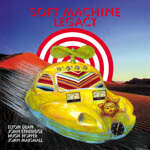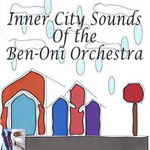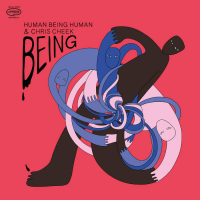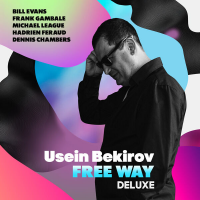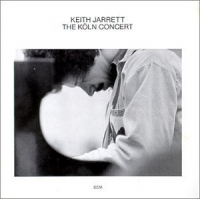Home » Jazz Articles » Multiple Reviews » Charles Mingus: Two Impressive Souvenirs
Charles Mingus: Two Impressive Souvenirs
The 1965 riots in Watts, which is that part of Los Angeles where Mingus spent much of his youth, had besmirched the city a month before his Monterey performance and his concert on the UCLA campus a week later. Not surprisingly, Mingus' emotions drive the concert, as best heard on "Don't Let It Happen Here, where he sings out spontaneously.
On the second disc, with the Mingus Big Band, trombonist/vocalist Ku-umba Frank Lacy brings us a similar experience on "Ecclusiastics, where he thanks the Lord for what has been handed down from generation to generation—which is what makes Mingus' music so special.
 Charles Mingus
Charles Mingus
At UCLA 1965
Sue Mingus Music
2006
Originally released as a double LP, in a limited edition of about 200 copies, this concert at UCLA is presented for the first time on CD. The sound is okay. It's a live session, after all, and some things are said off-microphone from time to time. But Mingus gives the audience one hell of a night. His octet is fierce and full of life as they interpret a large portion of the music that he had intended for their Monterey Jazz Festival performance a week earlier. Due to the festival's scheduling constraints, there was simply not enough time at Monterey for the full performance. On the opening track, Mingus mutters that they were only allotted 20 minutes.
The two-disc set contains extended pieces along with concert announcements and commentary. Mingus was up for this event, moving between bass and piano and working with his octet in spontaneous spurts. "Ode To Bird And Dizzy features alto saxophonist Charles McPherson in a multitude of bebop themes. Trumpeters Jimmy Owens and Hobart Dotson are featured on several selections, while Mingus ensures a balanced octet through most of the concert. French horn, trumpets, tuba, alto saxophone, drums and Mingus: what a combination.
The ensemble is small enough for Mingus to shape creatively during its performance, while it's also complex enough to give the audience a varied textural palette. From Dotson's high notes to Julius Watkins' purring harmony on French horn and McPherson's soaring melodies, the octet's collective sound moves dramatically. Somber and serious for the most part, the program walks forcefully through a majestic impression that we can call proud Mingus. He was one of a kind.
 Mingus Big Band
Mingus Big Band
Live In Tokyo
Sue Mingus Music
2006
The Mingus Big Band continues to interpret Mingus' original compositions with vivid accuracy. The band captures emotion the way Mingus put it there. Recorded last New Year's Eve at the Blue Note in Tokyo, the band sounds fresh and on top of the world, and each soloist has plenty to offer. As Sue Mingus notes, her husband would have "given his eye teeth to compose for musicians of this caliber week after week.
Celia features Craig Handy's alto saxophone in a sentimental ballad, while the high intensity "Wham Bam drives like crazy. "Bird Calls features four members of the band's saxophone section soloing with authority on a rapid-fire bebop line that's designed to honor the memory of Charlie Parker. Tenor saxophonist Wayne Escoffery interprets "Prayer For Passive Resistance with a deep blues feeling. With a little urging from the band's surrounding counterpoint, he builds the piece into a wail that takes the congregation higher and higher.
"Free Cell Block F features several of the band's key veterans in a cool rendering that sits atop a light, Brazilian mood. The Mingus message coming through this composition seems to say, "Lighten up. "Opus Four also borrows something from the Brazilian landscape, but it runs hard and fast, letting the band fill its holiday night with jubilant celebration.
Tracks and Personnel
At UCLA 1965
Tracks: Meditation On Inner Peace; Meditation On Inner Peace; Once Upon A Time, There Was A Holding Corporation Called Old America; Once Upon A Time, There Was A Holding Corporation Called Old America; Ode To Bird And Dizzy; They Trespass The Land Of The Sacred Sioux; The Arts Of Tatum And Freddy Webster; Once Upon A Time, There Was A Holding Corporation Called Old America; Muskrat Ramble; Don't Be Afraid, The Clown's Afraid Too; Don't Let It Happen Here.
Personnel: Charles Mingus: bass, piano; Dannie Richmond: drums; Hobart Dotson, Lonnie Hillyer: trumpet; Jimmy Owens: trumpet, flugelhorn; Charles McPherson: alto saxophone; Julius Watkins: French horn; Howard Johnson: tuba.
Live In Tokyo
Tracks: Wham Bam; Opus Four; Celia; Bird Calls; Meditations; Prayer For Passive Resistance; Free Cell Block F; Ecclusiastics.
Personnel: Eddie Henderson, Jack Walrath, Alex Sipiagin: trumpet; Abraham Burton: alto saxophone; Craig Handy: alto saxophone, flute; Wayne Escoffery, Seamus Blake: tenor saxophone; Ronnie Cuber: baritone saxophone; Ku-umba Frank Lacy: trombone, vocal; Conrad Herwig: trombone; Earl McIntyre: bass trombone, tuba; Dave Kikoski: piano; Kenny Davis: bass; Johnathan Blake: drums.
Tags
PREVIOUS / NEXT
Support All About Jazz
 All About Jazz has been a pillar of jazz since 1995, championing it as an art form and, more importantly, supporting the musicians who make it. Our enduring commitment has made "AAJ" one of the most culturally important websites of its kind, read by hundreds of thousands of fans, musicians and industry figures every month.
All About Jazz has been a pillar of jazz since 1995, championing it as an art form and, more importantly, supporting the musicians who make it. Our enduring commitment has made "AAJ" one of the most culturally important websites of its kind, read by hundreds of thousands of fans, musicians and industry figures every month.


